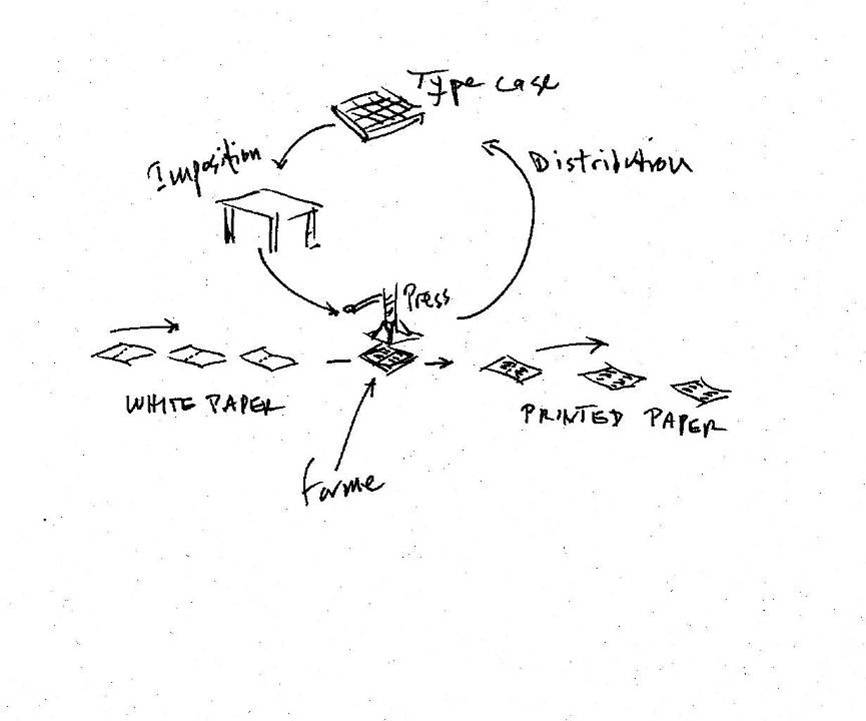
The Print Cycle: Image by Paul Needham (former Scheide Librarian, Princeton University, 1998-2020)
From the first printed books in the mid-Fifteenth Century, to the end of the cold-type print era in 1886, when Linotype type setting machines were introduced by Ottmar Mergenthaler, printed book production operated efficiently and economically by controlling the flow of paper through the press and the recycling of individual pieces of cold type from the type case to the "forme" in which they were held for printing. The paper flow strategy had long been mastered for production of manuscript books, and for producing wood-block books, but each of those processes would be considered an "art" rather than an industrial process in modern terms. Hand-made calligraphic letters are, obviously, the slowest and most aesthetically interested form of text. Wood block books also require high degrees of artistic skill for each page because each page must be carved in "negative" by a skilled craftsman before being inked and impressed on the paper. "Moveable type printing" was considered an industrial innovation because non-artist craftsmen could endlessly rearrange the alphabet in the type case to produce any given text according to a standardized aesthetic model determined by the type font, paper size, and ink. Oddly enough, though, the first type font almost certainly was not produced using a carved metal matrix into which molten type metal was poured. Research suggests that Johannes Guttenberg created his first type font using "sand casting," an artistic method also used to create jewelry (Guttenberg had been a goldsmith). Sometime soon thereafter, a second innovation led to development of the type font matrices for each letter of the alphabet, punctuation, diacritical marks and printers' devices.
